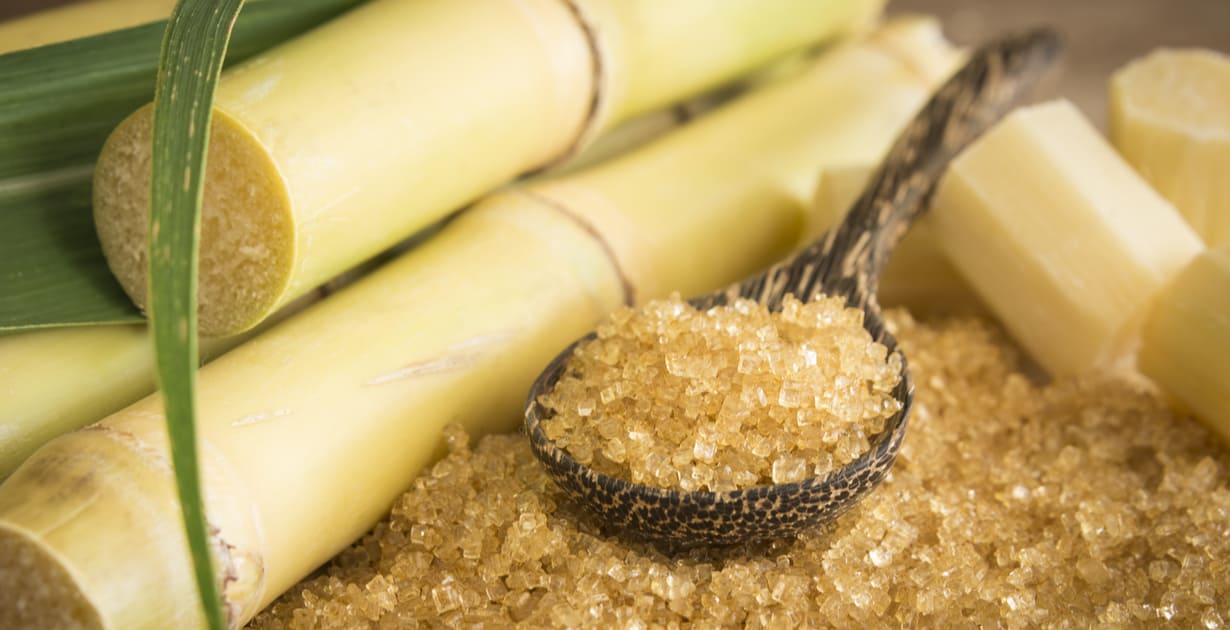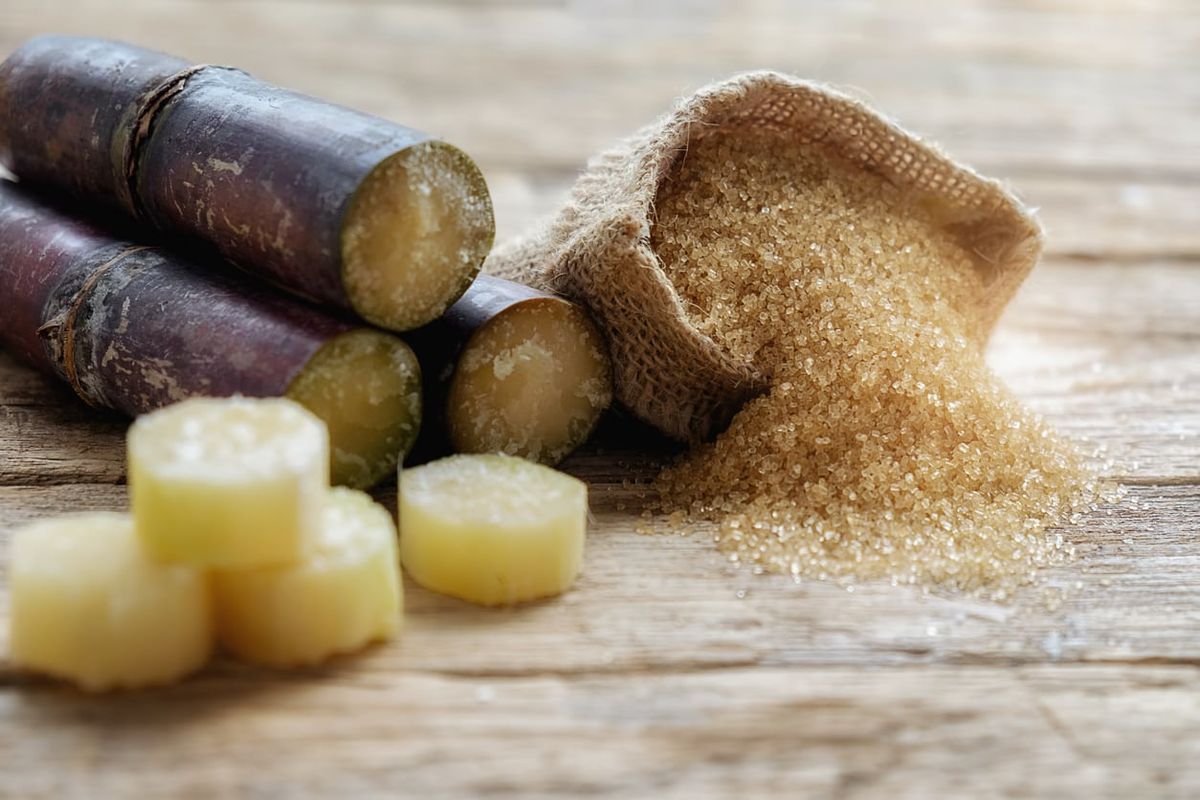Introducing the Relevance of Sugar Canes: What Are Sugar Canes Used For in the Walking Cane Sugar Industry?
Sugar walking canes offer as the keystone of the cane sugar market, mostly supplying the raw product required for sugar manufacturing. Their ability to convert sunlight into sucrose with photosynthesis is important. Beyond their sweetening residential or commercial properties, sugar canes find energy in various culinary applications and arising industries. Nevertheless, the full level of their impact expands beyond the kitchen. This discussion will check out the multifaceted functions of sugar walking canes in both industry and economic climate.
The Function of Sugar Canes in Sugar Manufacturing
Sugar walking canes work as the fundamental resources in the walking stick sugar sector, playing an essential duty in the manufacturing procedure. These tall, seasonal yards flourish in tropical and subtropical climates, where they take in sunshine and nutrients to generate sucrose. The harvesting of sugar canes usually takes place when the plants get to maturation, optimizing their sugar content.Once harvested, the walking sticks go through crushing to remove the juice, which contains liquified sugars. This juice is then made clear and focused through dissipation, transforming it right into a syrup. Ultimately, condensation occurs, enabling for the splitting up of sugar crystals from the remaining syrup.The drawn out sugar goes through additional refining to achieve the preferred pureness and top quality - What Are Sugar Canes Used For. The entire procedure highlights the crucial contribution of sugar walking canes to sugar production, emphasizing their significance as both a raw product and a driver in the production of walking cane sugar.
Diverse Applications in Food and Beverage Industry
In the food and drink industry, sugar walking cane offers numerous vital functions. It acts not just as a key sugar in different products yet additionally as a flavor agent that boosts taste accounts. In addition, its components play a substantial function in fermentation and distillation procedures, adding to the production of alcohols.
Sweetener in Products

The adaptability of cane sugar as a sugar makes it a staple in a wide range of food and drink items. Widely utilized in baked products, it improves the preference and appearance of cakes, cookies, and breads by giving wetness and advertising browning during cooking. In beverages, cane sugar is a popular selection for sweetening soft drinks, juices, and teas, enabling a balanced flavor account. Furthermore, it works as an important ingredient in sauces, sauces, and dressings, adding to a harmonious mix of flavors. Walking stick sugar's capacity to liquify quickly and its consistent sweet taste account further strengthen its function as a preferred sweetener - What Are Sugar Canes Used For. In general, its diverse applications underscore the essential function of walking stick sugar in the cooking landscape
Seasoning Agent Usage
Making use of cane sugar as a flavoring agent prolongs beyond its function as a simple sugar, enriching a selection of cooking productions. In the food and drink sector, it improves taste profiles by stabilizing level of acidity and bitterness, making it a crucial component in dressings, marinades, and sauces. Additionally, walking cane sugar adds to the overall mouthfeel, giving a pleasurable structure in baked items and confections. Its caramelization during cooking includes depth to both sweet and mouthwatering recipes, while also acting as a preservative in jellies and jams. Furthermore, in beverages, walking stick sugar is used to enhance tastes in mixed drinks and soft drinks, making certain an extra delightful alcohol consumption experience. This versatility highlights its relevance in varied cooking applications.
Fermentation and Purification
Walking stick sugar plays a significant function in fermentation and distillation procedures, which are necessary in producing a selection of liquors and food. During fermentation, yeast transforms sugars right into alcohol and co2, a basic step in crafting beverages like rum and vodka. Distillation further cleanses these alcoholic blends, concentrating flavors and boosting alcohol content. Past beverages, walking cane sugar is likewise essential in generating vinegar and certain preservative via fermentation. The versatility of walking cane sugar boosts the taste accounts and quality of these items, making it indispensable in the food and beverage industry. Its contribution not just sustains standard techniques but additionally promotes advancement in crafting new flavors and experiences for consumers.
Sugar Canes in Biofuel Manufacturing
As passion in eco-friendly energy sources expands, sugar walking sticks are increasingly identified for their capacity in biofuel production. The biomass originated from sugar walking sticks can be transformed into ethanol, a lasting fuel option that decreases greenhouse gas exhausts contrasted to fossil gas. This procedure commonly entails fermenting the sugar removed from the cane, which is then distilled to create high-purity ethanol appropriate for usage in vehicles.Additionally, sugar cane bagasse, the fibrous residue left after juice extraction, can be made use of as a feedstock for bioenergy. It can be melted to create heavy steam and electricity, adding to power self-sufficiency in sugar mills. Nations such as Brazil have actually efficiently integrated sugar walking cane biofuel into their energy policies, causing minimized dependence on imported gas - What Are Sugar Canes Used For. In general, sugar canes investigate this site stand for an encouraging opportunity for biofuel production, straightening agricultural exercise with ecological sustainability objectives
Industrial Uses of Sugar Canes
While often recognized mostly for sugar manufacturing, sugar walking sticks also have diverse commercial applications that prolong well past the food field. The coarse results of sugar walking stick, referred to as bagasse, offer as an important source in different markets. Bagasse is typically used as a biofuel, creating energy in sugar mills and other facilities. In addition, it can be processed into paper, cardboard, and biodegradable materials, advertising lasting practices.In enhancement, sugar walking canes add to the production of molasses, a by-product utilized in the fermentation procedure for creating alcohol and yeast. This convenience makes sugar canes important to the beverage and pharmaceutical markets. In addition, sugar cane essences are employed in the cosmetics market, providing all-natural components for skincare and appeal items. Overall, the industrial uses sugar walking sticks navigate to these guys highlight their value past sugar, showcasing their function in promoting sustainability and supporting different markets.
Economic Impact of Sugar Cane Cultivation
The economic impact of sugar walking cane farming is considerable, mainly via work development and export profits generation. This sector not just offers employment opportunities in backwoods yet additionally contributes significantly to nationwide economic climates through exports. Comprehending these facets highlights the essential function sugar walking stick plays in both neighborhood and international markets.
Work Creation Opportunities
Often overlooked, the sugar walking cane industry plays a crucial role in work development, substantially impacting local economies. The farming, harvesting, and processing of sugar walking cane create numerous job opportunity, from area employees to factory staff. In many areas, these jobs offer resources for hundreds of households, adding to area stability and growth. Additionally, secondary sectors such as transport, tools production, and retail take advantage of the sugar walking cane field, further increasing employment choices. Seasonal work throughout planting and harvest also supports momentary placements, allowing employees to gain income in or else lean durations. Generally, the sugar cane industry acts as an essential financial engine, promoting work production and improving the top quality of life for numerous people and communities.
Export Profits Generation

Sustainable Practices in Sugar Walking Stick Farming
While typical sugar cane farming methods have commonly resulted in ecological deterioration, an expanding variety of farmers are embracing sustainable approaches that focus on environmental equilibrium. These techniques include plant turning, which improves dirt fertility and decreases insect episodes, and using natural plant foods to decrease chemical runoff. Additionally, some farmers are carrying out integrated parasite administration approaches, which concentrate on utilizing all-natural killers and biopesticides instead of unsafe chemicals.Water conservation methods, such as drip watering, are also gaining traction, enabling for effective water use while maintaining plant health. Several farmers are spending in renewable energy sources, such as biomass from sugar walking stick waste, to power operations and decrease their carbon impact. These lasting techniques not only secure environments yet likewise boost the long-term stability of sugar walking cane farming, making certain that it can continue to fulfill international sugar needs while lessening ecological influence.
Frequently Asked Concerns
Just How Are Sugar Canes Harvested and Processed?
Sugar walking canes are gathered making use of hands-on approaches or mechanical cutters, then moved to manufacturing facilities. There, they undertake washing, crushing, and extraction procedures to get juice, which is then cleared up, vaporized, and crystallized right into sugar.
What Is the Nutritional Value of Sugar Walking Cane?
The dietary value of sugar cane includes carbs, primarily in the kind of sucrose, together with trace quantities of minerals and vitamins like calcium and potassium. It is reduced in healthy protein and fat material overall.
Can Sugar Walking Stick Be Expanded in Non-Tropical Areas?
Sugar walking cane can be grown in non-tropical regions, yet it calls for specific problems such as ample heat, moisture, and ideal dirt. Adaptation and cultivation practices are necessary for effective development outside traditional tropical climates.

What Diseases and parasites Influence Sugar Walking Cane Crops?
Pests and diseases markedly affect sugar cane crops. Typical dangers consist of the sugarcane borer, red rot, and mosaic infection, which can lower return and top quality, demanding reliable management practices to protect these crucial farming resources.
Exactly How Does Sugar Walking Stick Farming Effect Citizen Communities?
Sugar walking stick farming substantially influences regional communities by providing employment possibility, advertising economic development, and supporting local companies. However, it can additionally lead to environmental problems and social difficulties, influencing community wellness and sustainability. Sugar walking sticks serve as the cornerstone of the cane sugar industry, mainly supplying the raw product needed for sugar production. Sugar canes serve as the fundamental raw product in the walking stick sugar market, playing a critical role in the production procedure. The harvesting of sugar walking sticks usually occurs when the plants reach maturation, optimizing their sugar content.Once gathered, the canes go through squashing to extract the juice, which has liquified sugars. While often acknowledged mostly for sugar manufacturing, sugar walking canes also have varied commercial applications that prolong well past the food sector. As global demand for sugar continues to rise, nations abundant in sugar walking cane resources utilize on this possibility, exporting raw sugar and fine-tuned items to global markets.
Comments on “From Farms to Factories: What Are Sugar Canes Used For in Today’s Economy”